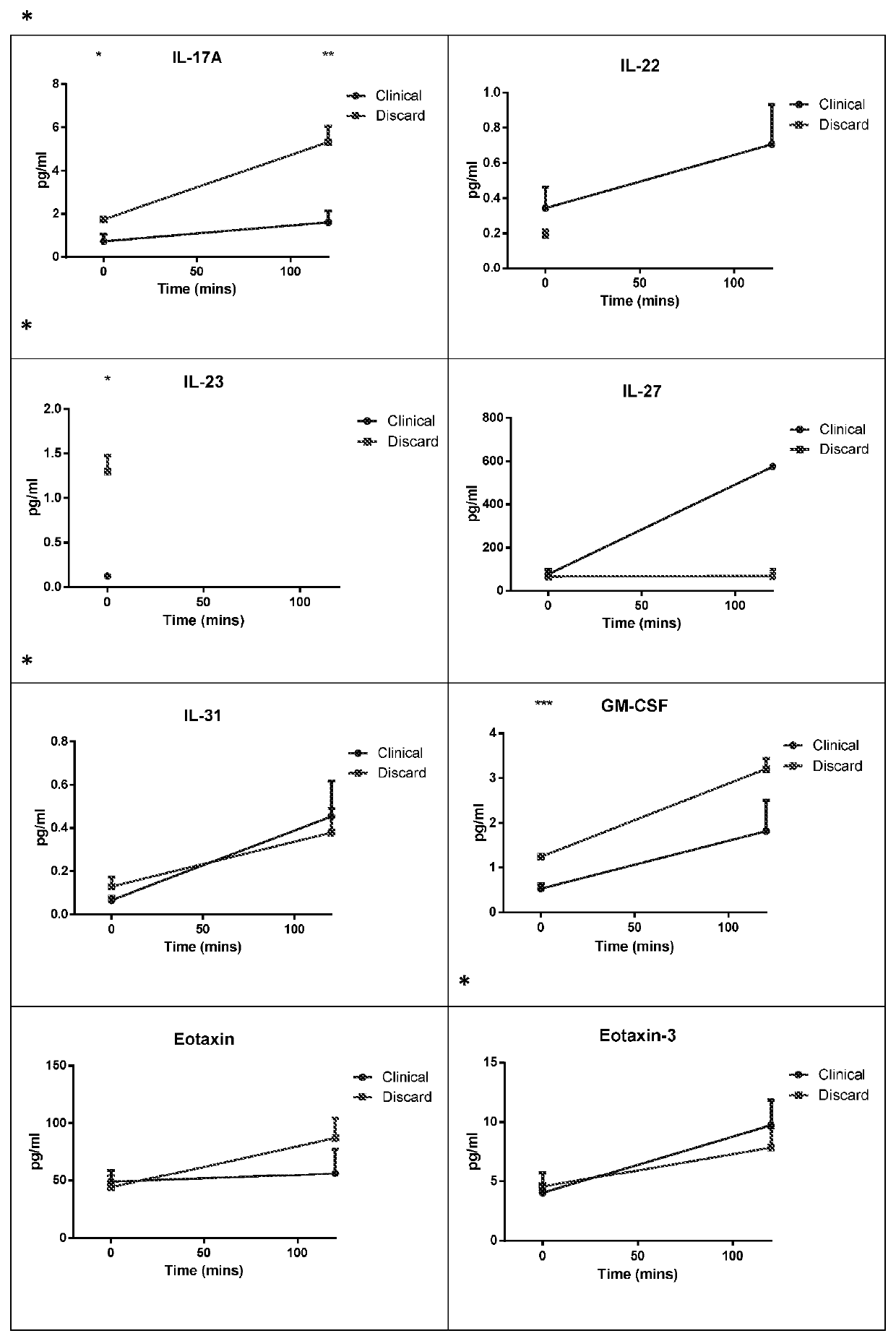Biomarkers for assessing explant organ viability
a biomarker and organ technology, applied in the field of assessment of explant organ viability, can solve the problems of organ donation not being able to keep up with the rising demand, the expansion of patients, and the depletion of intracellular energy sources
- Summary
- Abstract
- Description
- Claims
- Application Information
AI Technical Summary
Benefits of technology
Problems solved by technology
Method used
Image
Examples
example 1
Real-Time Pre-Implant Liver Assessment
[0385]Multiplex Analysis
[0386]Methods
[0387]Perfusate samples were taken at regular intervals from all livers perfused and stored at −80° C. for late analysis. A multiplex assay was performed on perfusate samples from all livers to assess for any biomarker that could differentiate between different groups of livers.
[0388]Perfusate samples and reagents were brought to room temperature. The following Mesoscale (Rockville Md., USA) multiplex plates were used:[0389]V-PLEX Chemokine Panel 1[0390]V-PLEX Pro-inflammatory Panel 1[0391]V-PLEX Cytokine Panel 1[0392]V-PLEX TH17 Panel 1[0393]V-PLEX Angiogenesis Panel 1[0394]V-PLEX Vascular Injury Panel 2
[0395]Calibration solutions were prepared in the appropriate diluent for each panel, with 4-fold serial dilutions. Perfusates were diluted 2-fold for time-0 time-points and by 10-fold for end time-points in the appropriate diluent for each plate. A combined detection antibody solution for each plate was prepa...
PUM
 Login to View More
Login to View More Abstract
Description
Claims
Application Information
 Login to View More
Login to View More - R&D
- Intellectual Property
- Life Sciences
- Materials
- Tech Scout
- Unparalleled Data Quality
- Higher Quality Content
- 60% Fewer Hallucinations
Browse by: Latest US Patents, China's latest patents, Technical Efficacy Thesaurus, Application Domain, Technology Topic, Popular Technical Reports.
© 2025 PatSnap. All rights reserved.Legal|Privacy policy|Modern Slavery Act Transparency Statement|Sitemap|About US| Contact US: help@patsnap.com



